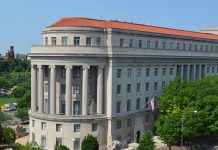Federal Reserve and other top U.S. regulators are pressing forward with plans to increase capital requirements for major banks, as reported by Bloomberg News on May 1, 2024. Despite pushback from financial institutions, key officials are determined to refine the proposal rather than starting anew, aiming to finalize it by August 2024, sources familiar with the matter revealed.
The proposal, based on the Basel III framework, aims to enhance international capital standards established by the Basel Committee on Banking Supervision in response to the global financial crisis. Unveiled by bank regulators, led by the Federal Reserve, in July 2023, the plan targets banks with assets exceeding $100 billion, intending to revamp how these institutions calculate reserves to mitigate potential losses.
While the focus areas of the proposal include credit risk, market risk, and operational risk, banks have voiced concerns that the draft exceeds the Basel accord's scope and exaggerates their risk exposure. They argue that their resilience, demonstrated by weathering the COVID-19 pandemic and consistently passing the Fed's stress tests, underscores the adequacy of their current capitalization levels, deeming any additional capital requirements unwarranted.
Despite this resistance, Reuters reported in March 2024 that regulators were anticipated to scale back the proposed rule, reducing the supplemental capital banks must maintain. This adjustment follows vigorous opposition from Wall Street, highlighting the ongoing tension between financial institutions and regulators regarding capital adequacy standards.
While the Federal Deposit Insurance Corporation, the Federal Reserve, and the Office of the Comptroller of the Currency declined to comment on the recent developments, the determination to refine and advance the capital requirements underscores regulators' commitment to bolstering the stability and resilience of the banking sector.
As discussions continue between regulators and industry stakeholders, the outcome of these deliberations will significantly influence the regulatory landscape for major banks and shape the future of financial stability in the United States.






















